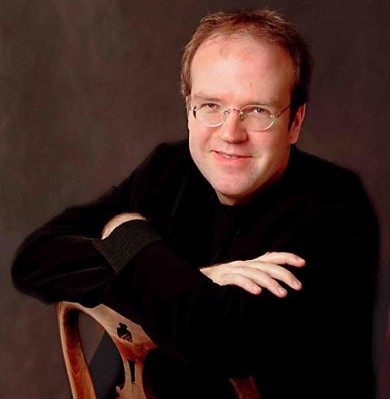Labadie leads New World in stylish performances of Baroque rarities

Bernard Labadie led the New World Symphony in music of Gluck and Rameau Saturday night
The eminent Baroque and Classical specialist Bernard Labadie led a downsized New World Symphony Saturday in one of the ensemble’s most impressive performances of 18th-century music in a long time.
Labadie, founder and music director of Les Violons du Roy, a chamber orchestra based in Québec City, has a reputation for respecting the practices of previous musical eras without the antiquarian fussiness that can drain the life from music. He has led many of the world’s great ensembles in works of the 17th and 18th centuries, including a 2009 performance of Mozart’s Magic Flute with the Metropolitan Opera.
For Saturday’s program at New World Center in Miami Beach, he chose selections from Gluck’s 1761 ballet Don Juan, or The Feast of Stone, a work with which Mozart was familiar when he composed Don Giovanni 26 years later. And he chose excerpts from Rameau’s 1739 opera Dardanus, a work inspired by Greek mythology, for which the ensemble was joined by the Canadian soprano Tracy Smith Bessette.
It was a bit problematic to program two theatrical works minus the theater, particularly when few members of the audience were likely to be familiar with the music. There was a sameness to some of the selections, and without much clue to what was supposed to be happening in the plot at each moment, it made it harder to appreciate some of the performances.
But under Labadie’s baton, the musicians performed brilliantly, with fire and technical accuracy, and that went a lot way toward making this music come through successfully. While the big symphonies of Dvorak, Bruckner, Brahms and the rest can make it possible for a few inaccuracies to go unnoticed, the more lightly orchestrated works of the 17th and 18th centuries mercilessly expose problems of intonation or ensemble precision. But Saturday the strings played with dead-on intonation and precision, and brass and winds played with great refinement and sensitivity.
More than simply offering technical accuracy, the orchestra played in style that maximized the dramatics, with grand, sweeping crescendos, eerie tremolos and lively melodic playing. The final scene, taking place in this case in a graveyard, in which the Commendatore shows up and the Don goes down to hell, was a fire-breathing tour-de-force, assisted by the skillful use of what appeared to be an alto trombone, a smaller version of the traditional brass instrument, which added a throaty, lustrous texture to the performance. Contributing to the high quality of the performance was the presence of Nicole Trotier, co-principal violinist of Les Violons du Roy, as guest concertmaster, and Richard Paré, keyboard player for Les Violons du Roy, on the harpsichord.
The orchestra took on a different tone quality in the Rameau work, composed a generation prior to Gluck’s ballet. Strings performed without vibrato and played with a glassy sound that brought a varied texture to the performance and made it seem from a distinctly different era than the previous work. Bessette sang with a light, agile voice, easily handling the richly ornamented arias, and seemed to try to blend in with the orchestra, particularly the winds, rather than stand out from it. The music lacked the dramatic impact of Gluck’s opera, which made it harder to appreciate without staging.
The New World Symphony repeats the program 2 p.m. Sunday at New World Center in Miami Beach. nws.edu, 800-597-3331.
Posted in Performances
Leave a Comment
Sun Mar 4, 2012
at 11:51 am
No Comments
